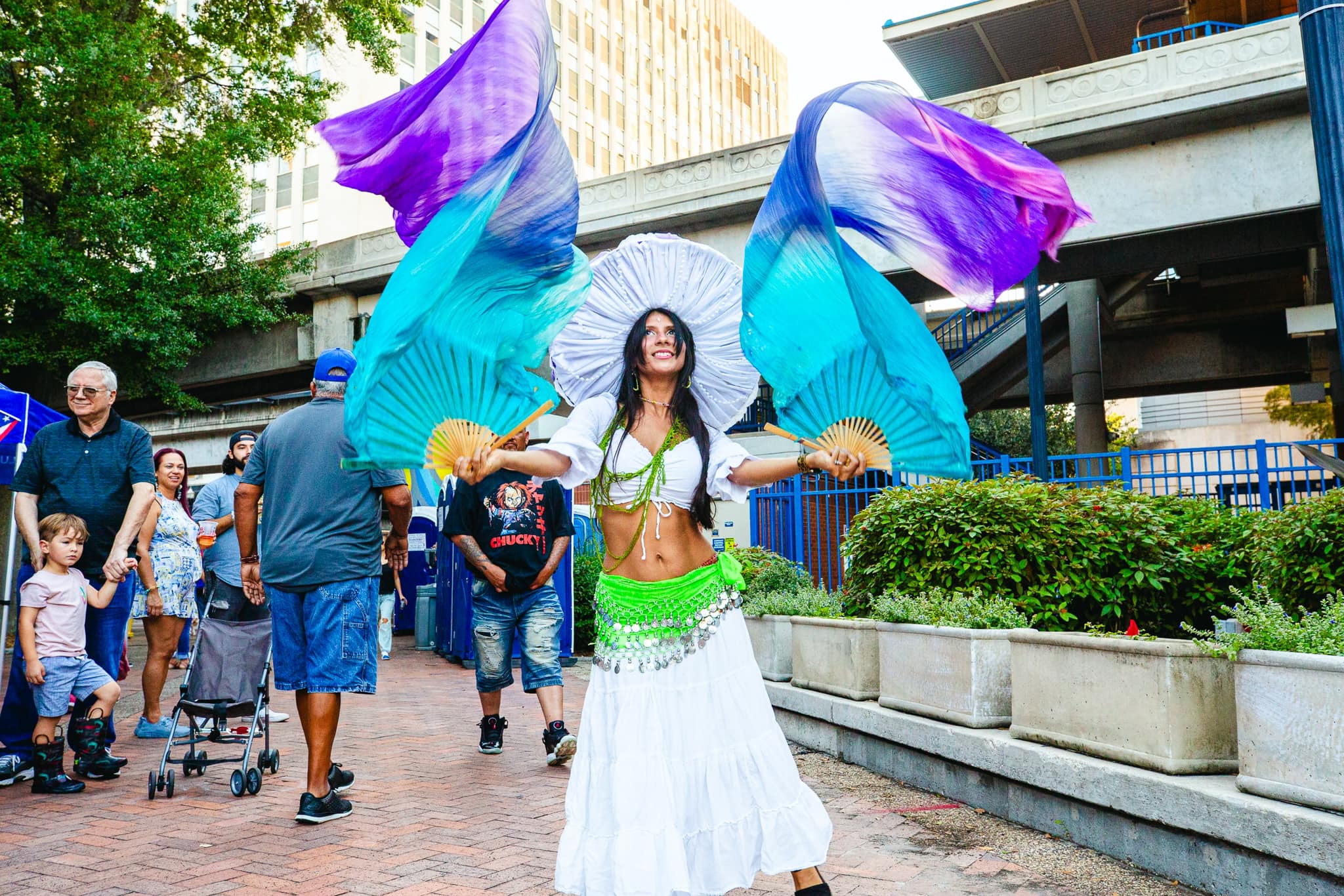The heart of Downtown.
Our mission is to serve as a modern, urban space, engaging diverse communities and restore vitality to the public square that is the heartbeat of our city.
Friends of James Weldon Johnson Park is a nonprofit organization founded in 2014 and contracted with the City of Jacksonville to revitalize the city’s first and most historic public park. James Weldon Johnson Park is located in the heart of Downtown Jacksonville, adjacent to City Hall, the main branch of the Jacksonville Public Library, and the Museum of Contemporary Art.
VALUES
Our mission is to transform James Weldon Johnson Park into a modern, urban space that engages diverse communities and restores vitality to our city’s public square. We accomplish this by adding and maintaining landscaping and amenities and providing daily programming. Our park ambassadors and security welcome and share information with our guests while ensuring that James Weldon Johnson Park is clean and safe. Our programming is informed and supported by a variety of community partnerships.
The park includes two performance stages; Charlie’s Cafe, an outdoor dining area; a Kids’ Zone with whimsical sculptural seating and turf play area; beautiful landscaping; and several public art projects. Regular programming includes live music and food trucks each Monday through Friday; children’s activities; and weekend festivals and markets.
Lift ev’ry voice and sing, till earth and Heaven ring,
Ring with the harmonies of liberty;
Let our rejoicing rise, high as the listening skies,
Let it resound loud as the rolling sea.
Sing a song full of faith that the dark past has taught us,
Sing a song full of the hope that the present has brought us;
Facing the rising sun of our new day begun,
Let us march on till victory is won.
OUR NAMESAKE:


James Weldon Johnson was born on June 17, 1871 in Jacksonville, FL. As a child, he studied piano and guitar. The achievement of his father, headwaiter at the St. James Hotel, inspired him to pursue a professional career. Molded by the classical education for which Atlanta University was best known, Johnson regarded his academic training as a trust. He knew he was expected to devote himself to helping black people advance. He graduated with honors in 1894 and returned to Jacksonville to teach at Stanton High School, where he later became Principal. While principal, he founded and edited the first Negro daily in the United States, The Daily American.











